Painting the invasives blue
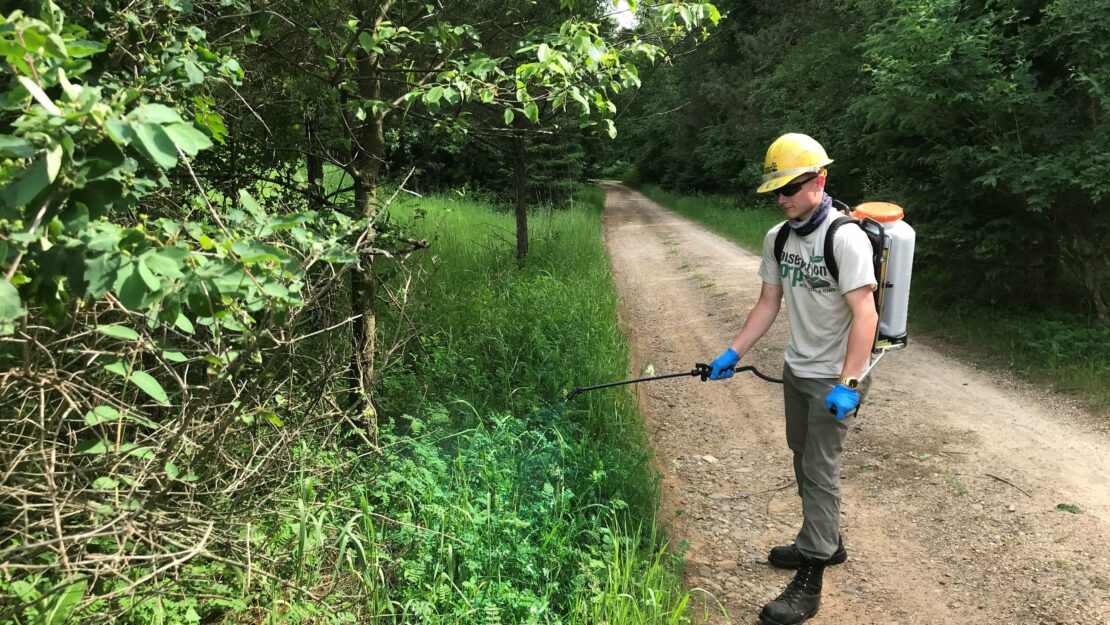
by Jaleesa Houle, crew leader/ AmeriCorps member, central district
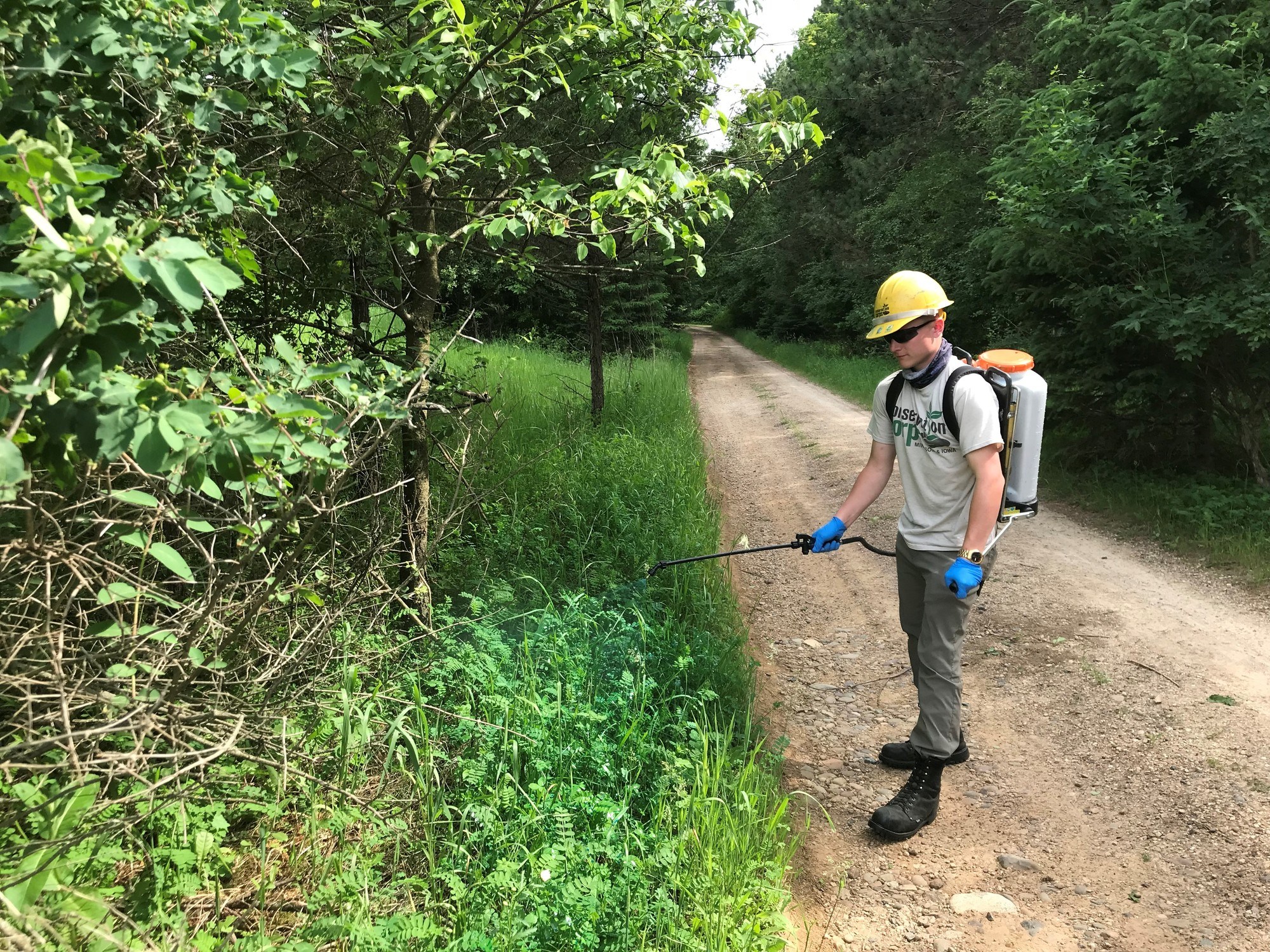
One of my crew members, Levi Tollefson, spraying crown vetch on the edge of our unit at Afton State Park.
Despite the seemingly endless winter, spring has sprung, and summertime has started to creep in, which means that plants are sprouting up left and right throughout Minnesota. For Conservation Corps MN & IA (CCMI) Field Crews, the change in seasons often means a change in daily tasks.
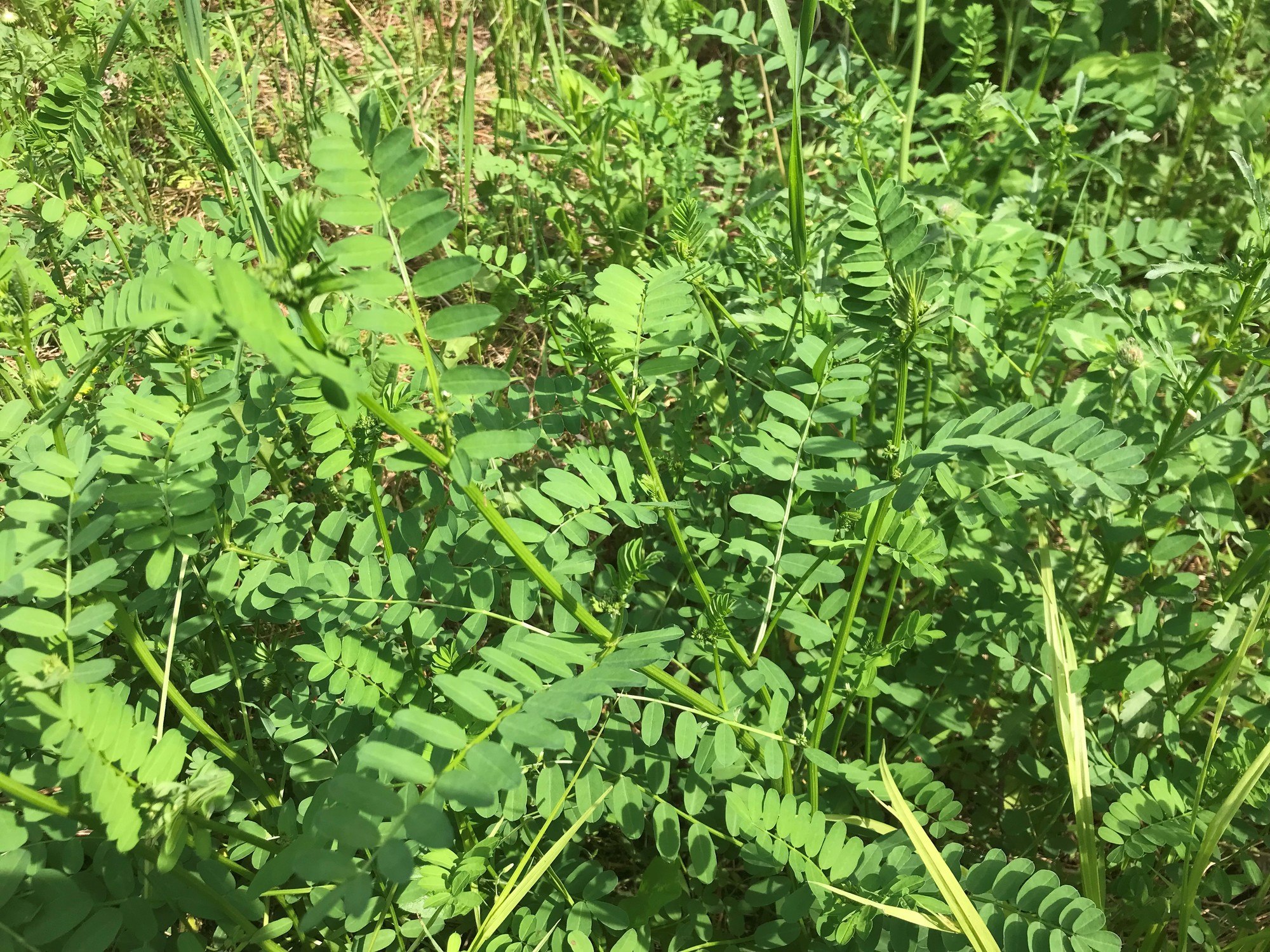
A dense patch of crown vetch at Afton State Park.
One essential task of CCMI crews is assisting in the control of invasive species. We don’t like invasive species. They cause a host of problems and encroach on native ecosystems, quickly taking over if not controlled. The Department of Natural Resources has identified various invasives that are a threat to Minnesota’s native habitats and has established management techniques to combat these pesky plants. As foot soldiers for the DNR, our job is often to assist in the removal of these species.
This week, my crew has been tasked with controlling cow vetch and crown vetch in Afton State Park and Wild River State Park. These two species of plants are similar in that they smother native species and can take over prairie restoration sites in addition to other disturbed areas. Like many invasive species, these plants have several native lookalikes, which means we must be confident that we are properly identifying them. On our first day of working with these plants, we met with our project host from the DNR to go over what the plants look like and identify similar species to avoid.
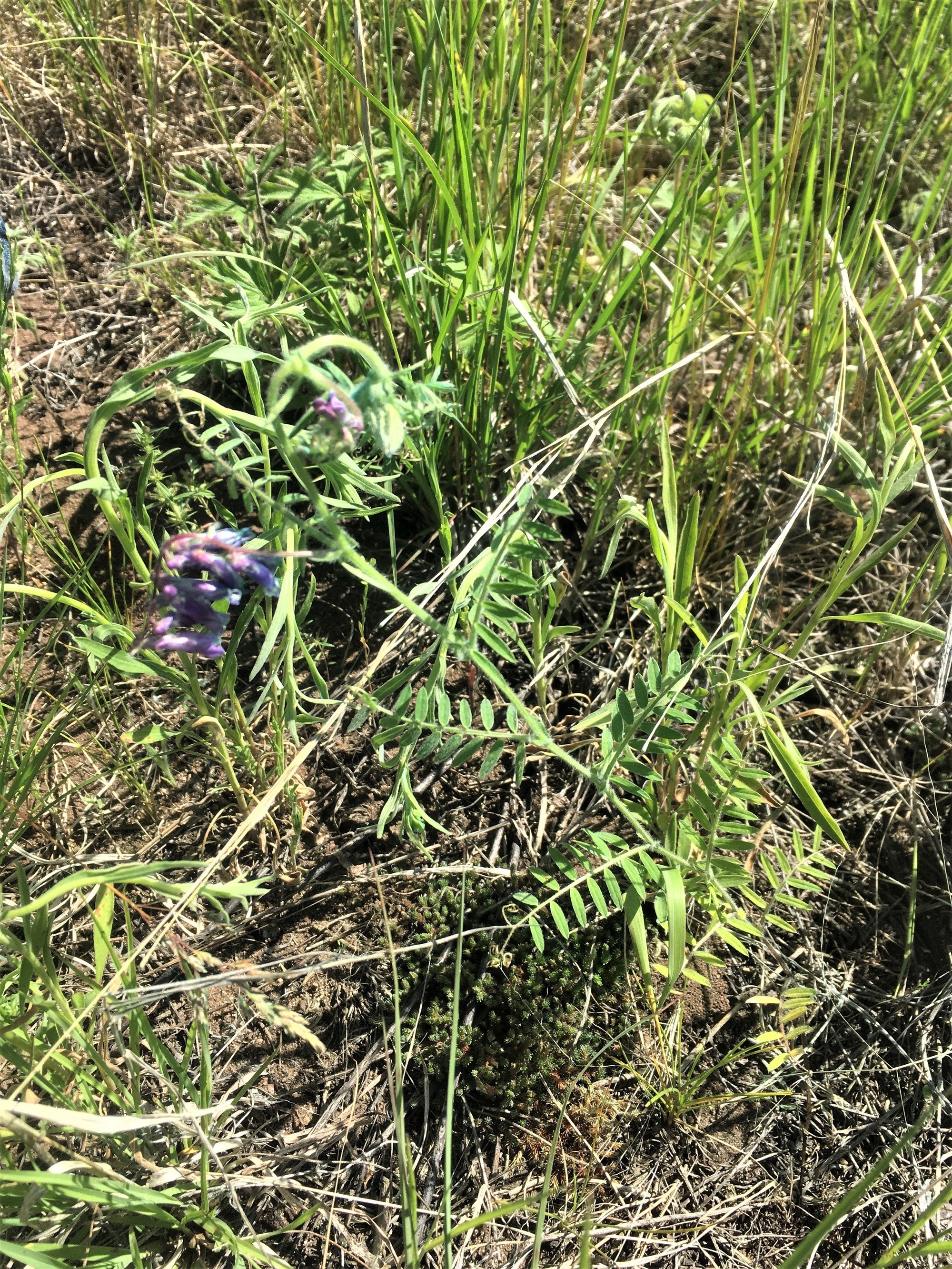
Flowering cow vetch at Wild River State Park.
In order to combat both cow and crown vetch, we need to catch them before they go to seed. Once the plants spread their seed, there’s not much we can do to control them. Research has found that an effective management method for attacking these vetch species is to spray herbicide on the plant as it’s beginning to flower. For us, this means putting on backpack sprayers and walking through fields looking for these plants and spraying them with herbicide.
What goes into our backpack sprayers? Mostly water. For every gallon of water, we mix a mere half ounce of the herbicide we’ve been given to use and add some blue dye so we can see where we’ve sprayed. The low dosage of herbicide in combination with hand-spraying allows us to minimize the impact of nearby plant species that we want to survive and thrive.
Our backpacks can hold up to 5 gallons, but we typically fill them 2-3 gallons at a time. Even with the backpacks half filled, they weigh 25-35lbs. Depending on how dense the area we’re spraying is, that amount should last most of the day. In order to make sure we get as much vetch as possible while using our herbicide sparingly, we line up an arms-width distance apart and grid the area. When we finish day, we end up with a field of blue vetch and the promise of a healthier prairie land. It can be tiring carrying 30lbs+ on our backs all day, but it feels good to leave an area knowing that we are protecting and improving our native ecosystems.
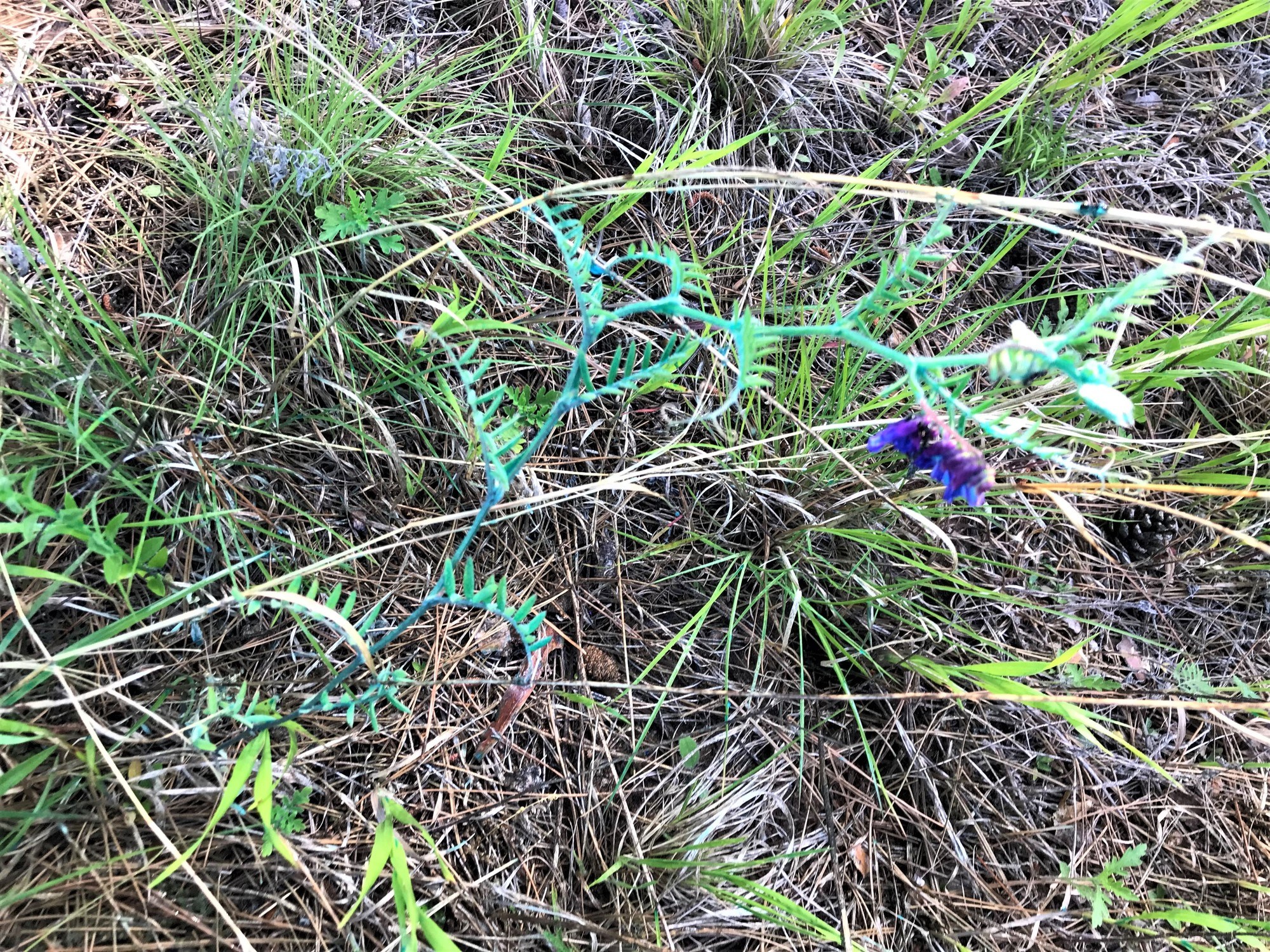
Cow vetch after being sprayed at Wild River State Park.